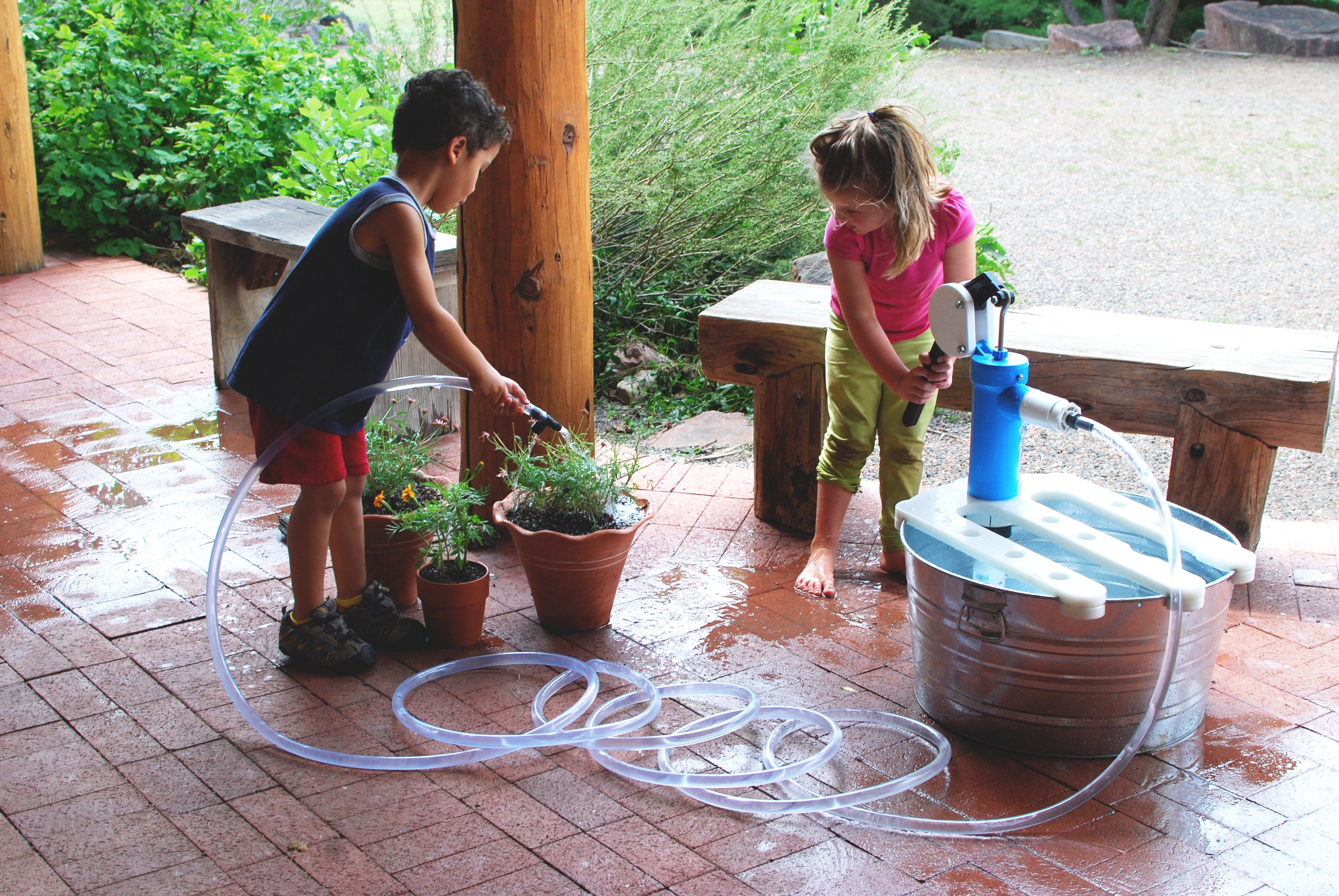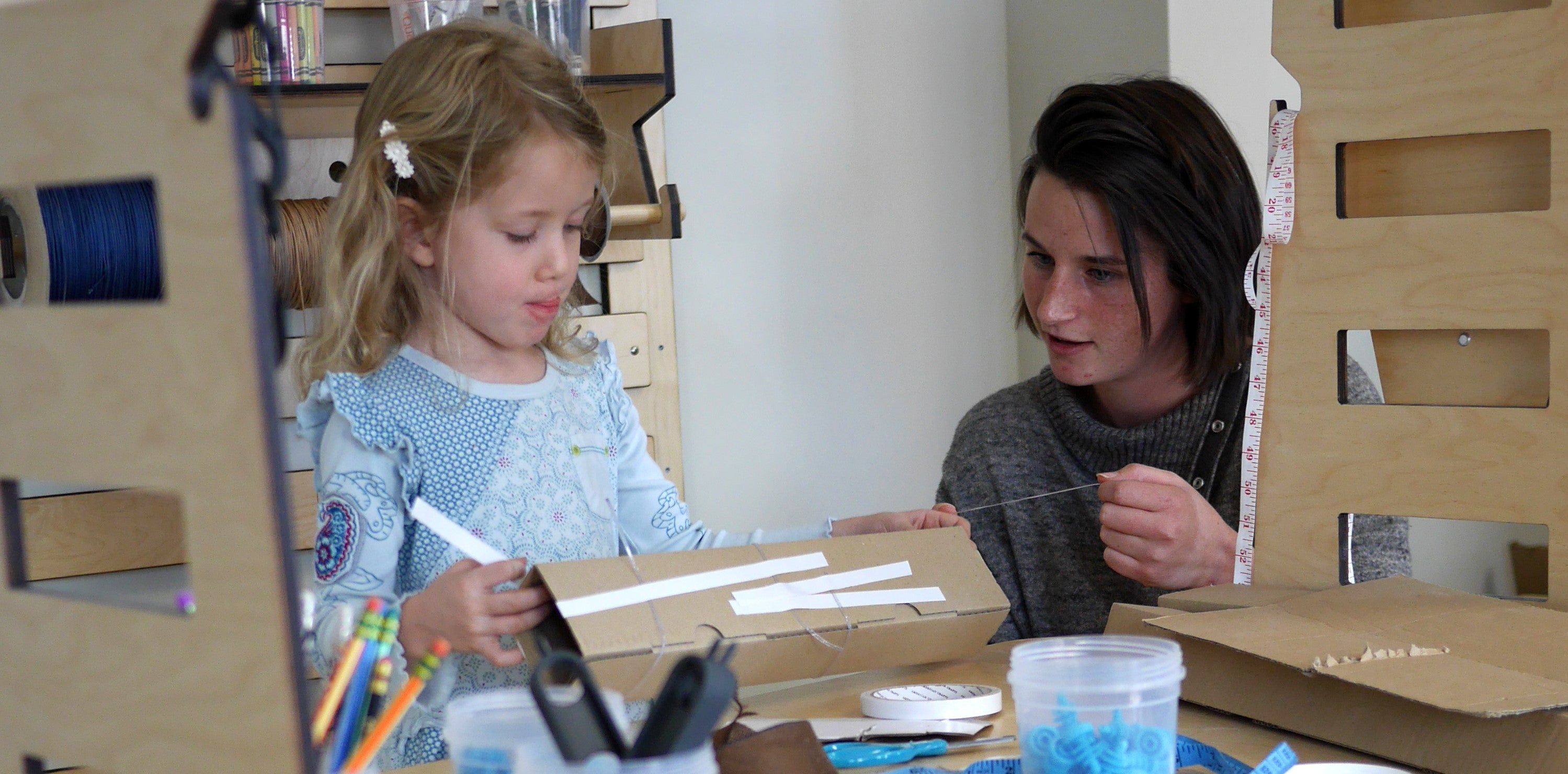 Photo 1 - Anders and two other children are provoked by the teacher to combine rubber ramp with wooden ramps. At first Anders does not include a tunnel, but, along with his friends, is focused on making the transition between wooden ramp and rubber ramp work.
Photo 1 - Anders and two other children are provoked by the teacher to combine rubber ramp with wooden ramps. At first Anders does not include a tunnel, but, along with his friends, is focused on making the transition between wooden ramp and rubber ramp work.
 Photo 2 - After figuring out that the rubber ramp should be under the wooden ramp, the children make a few minor adjustments to their path. Anders constructs a tunnel over the rubber ramp using blocks. The balls hit the tunnel roof and bounce off the track. This was clearly not intended and they all rush to look at it. They test this several times, exchanging balls and moving the wooden ramp, but do not change the tunnel or its position along the path.
Photo 2 - After figuring out that the rubber ramp should be under the wooden ramp, the children make a few minor adjustments to their path. Anders constructs a tunnel over the rubber ramp using blocks. The balls hit the tunnel roof and bounce off the track. This was clearly not intended and they all rush to look at it. They test this several times, exchanging balls and moving the wooden ramp, but do not change the tunnel or its position along the path.
 Photo 3 - Anders watches the ball bounce off the track and gets another block. More tinkering…more thinking....the tunnel roof is modified. The walls are moved, but their position along the track remains the same. Could Ander’s question be, “Does making a wider tunnel allow the ball to pass through?’” We believe these actions prove that Anders knows the ball needs more space in which to pass through. In this case teachers might offer that adding height or moving the tunnel further down the path would easily solve the problem, but the adults refrain from solving the problem for the children and let the play unfold.
Photo 3 - Anders watches the ball bounce off the track and gets another block. More tinkering…more thinking....the tunnel roof is modified. The walls are moved, but their position along the track remains the same. Could Ander’s question be, “Does making a wider tunnel allow the ball to pass through?’” We believe these actions prove that Anders knows the ball needs more space in which to pass through. In this case teachers might offer that adding height or moving the tunnel further down the path would easily solve the problem, but the adults refrain from solving the problem for the children and let the play unfold.
 Photo 4 - Tinkering with the tunnel design continues with another iteration and the problem is temporarily solved..the roof is removed and walls are positioned to hug the track again. (This happened so fast I only caught it after going through the photos!) Anders does have an understanding that removing roof will allow the ball to travel the path, as his original structure simply did not allow enough space.
Photo 4 - Tinkering with the tunnel design continues with another iteration and the problem is temporarily solved..the roof is removed and walls are positioned to hug the track again. (This happened so fast I only caught it after going through the photos!) Anders does have an understanding that removing roof will allow the ball to travel the path, as his original structure simply did not allow enough space.
 strong>Photo 5 - More tinkering, this time with a change in the shape of the roof. Anders new design is successful in achieving his original intent of including a structure that would serve as a tunnel and allow the balls to pass through. Tah Dah
We believe this series of images clearly demonstrates:
strong>Photo 5 - More tinkering, this time with a change in the shape of the roof. Anders new design is successful in achieving his original intent of including a structure that would serve as a tunnel and allow the balls to pass through. Tah Dah
We believe this series of images clearly demonstrates:
- the design process is often very evident in children’s play
- engineering concepts are present in the preschool classroom without being “taught”
- understanding material properties is a natural result of experience with those materials
- Tinker Thinking supports the desired results of supporting children’s reasoning skills and critical thinking in the classroom
We’ll have more stories about this topic over the weeks to come!




Share:
How to Make Open-Ended Play Not Be Overwhelming
Tinker Thinking Part II - Building Bridges for Kids